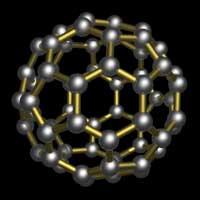Magnetic polymer sensitive to light
2002/02/04 Carton Virto, Eider - Elhuyar Zientzia
By maintaining the optical magnetic polymer under the blue light for six hours, the magnetism of the material increases by 150% and keeps magnetism dark. Under the green light, the polymer loses the magnetism obtained, but not at all, since in the end it is 60% more magnetic than it is.

Thanks to these properties, researchers believe that it can be a very appropriate material to store and remove information on hard drives of computers. Theoretically, materials with optical and magnetic properties should work more effectively and faster than electronics, and information seems to evolve in the future.
Arthur Epstein, of the University of Ohio, believes that the new material has been an important step but will only bear fruit in the long term. In fact, the aforementioned properties only appear at very low temperature, at 75 kelvin, ie at -198 °C. "We have shown that it is possible to synthesize a magnetic polymer sensitive to light and now we can use the knowledge of organic chemistry to improve these properties," he explained. As with superconductors, the objective is the ambient temperature. However, -198ºC is not bad, since it is very close to the temperature of liquid nitrogen.
The polymer has been synthesized by combining tetracyanoethylene (TCNE) and manganese ions. Researchers still do not know what the mechanism of action of light is, but they believe it repels the configuration of TCNE molecules. According to Epstein, "when the configuration of a molecule changes, its magnetic properties change and drive them to change the adjacent molecules."

Gai honi buruzko eduki gehiago
Elhuyarrek garatutako teknologia






